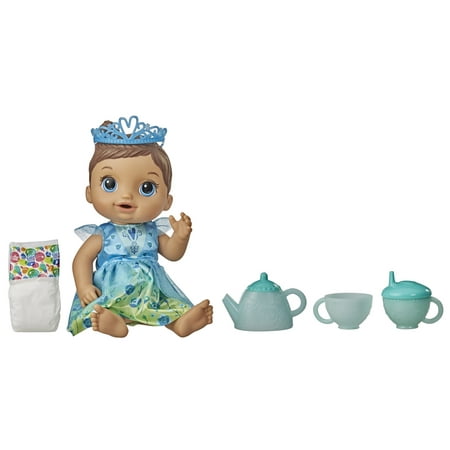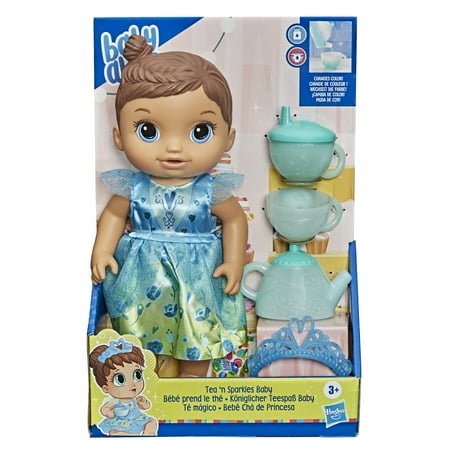Baby Alive Tea n Sparkles Doll, Color-Changing Tea Set, Brown Hair, Drinks, Wets
Baby Alive Tea ‘n Sparkles Baby Doll, Color-Changing Tea Set, Doll Accessories, Drinks and Wets, Brown Hair Toy for Kids Ages 3 and Up A PRINCESS-THEMED TEA PARTY FOR TWO: Kids will want to invite all of their friends to imagine a fancy tea party with Baby Alive Tea ‘n Sparkles Baby doll!TEA SET CHANGES COLOR: Each Baby Alive Tea ‘n Sparkles Baby doll comes with an adorable teapot and 2 teacups that change color with cold water. It’s so much fun to watch!PRETTY DOLL ACCESSORIES: Includes a sparkly removable dress and tiara, plus a teapot, color-changing teacups (with sippy cup lid for baby) and a diaperDOLL THAT DRINKS AND WETS: Since Tea ‘n Sparkles Baby dolls drink water and “pee,” like a baby, they’ll need a diaper change! (Additional dolls and diapers sold separately. Subject to availability.)FOR KIDS AGES 3 AND UP – Girls and boys ages 3 years old and up can enjoy hours of tea-time fun with Baby Alive Tea ‘n Sparkles Baby doll, making it a great toy or gift for birthdays and holidays








It’s a color-changing princess tea party! Time for tea parties and make-believe with Baby Alive Tea ‘n Sparkles Baby dolls! Each Tea ‘n Sparkles Baby doll comes with a “magical” tea set that changes color with cold water! Kids can imagine that their doll is a sparkly princess with shimmery doll accessories including a removable party dress and princess tiara. Along with a teapot, color-changing teacups (with sippy cup lid for baby) and a diaper. After all that tea-time fun, it’s definitely time for a diaper change! That’s because Baby Alive Tea ‘n Sparkles Baby doll drinks and wets! It also makes a great toy or gift for girls and boys ages 3 years old and up. (Additional dolls and diapers sold separately. Subject to availability.) Baby Alive and all related properties are trademarks of Hasbro. Includes doll, removable dress, tiara, teapot, 2 cups, sippy cup lid, diaper and instructions.For ages 3+WARNING: Small parts may be generated.Note: Adult should remove and discard fasteners/packaging components.SURFACE CLEAN ONLY ©2020 Hasbro. All Rights Reserved.





Reviews
There are no reviews yet.